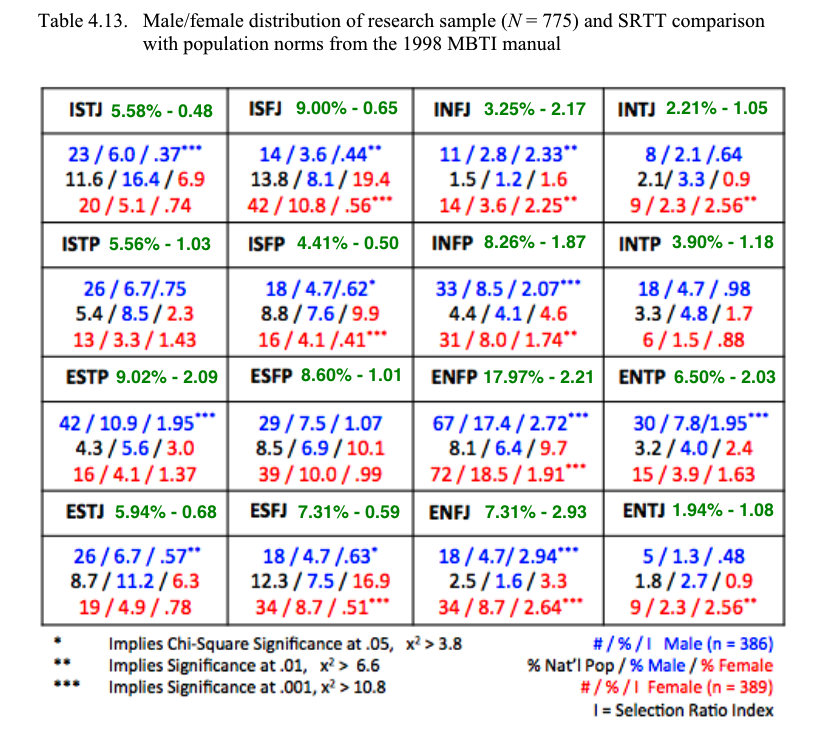Verona
New member
- Joined
- May 9, 2016
- Messages
- 590
- MBTI Type
- INFP
- Enneagram
- 6w5
- Instinctual Variant
- sp
I came across this study done at the University of Iowa using MBTI type and I found the percentages they accumulated to be quite interesting because they differ a lot from the traditional MBTI numbers floating around. The numbers on the MBTI website are from between 1972-2002 while this study was released in 2013 and contains more recent data specifically relating to college students. This study reported a much higher number of NFPs compared to the traditional numbers and have S and N types being almost equal. Any study has a margin of error but it does make me wonder if maybe younger people are now just as likely to be N over S. It might explain why there are so many NFPs in this forum. Thoughts?
Here is a link to the study. There were 775 students surveyed over many years. The type numbers start being discussed on page 79. http://lib.dr.iastate.edu/cgi/viewcontent.cgi?article=4102&context=etd
Here is a link to the study. There were 775 students surveyed over many years. The type numbers start being discussed on page 79. http://lib.dr.iastate.edu/cgi/viewcontent.cgi?article=4102&context=etd


